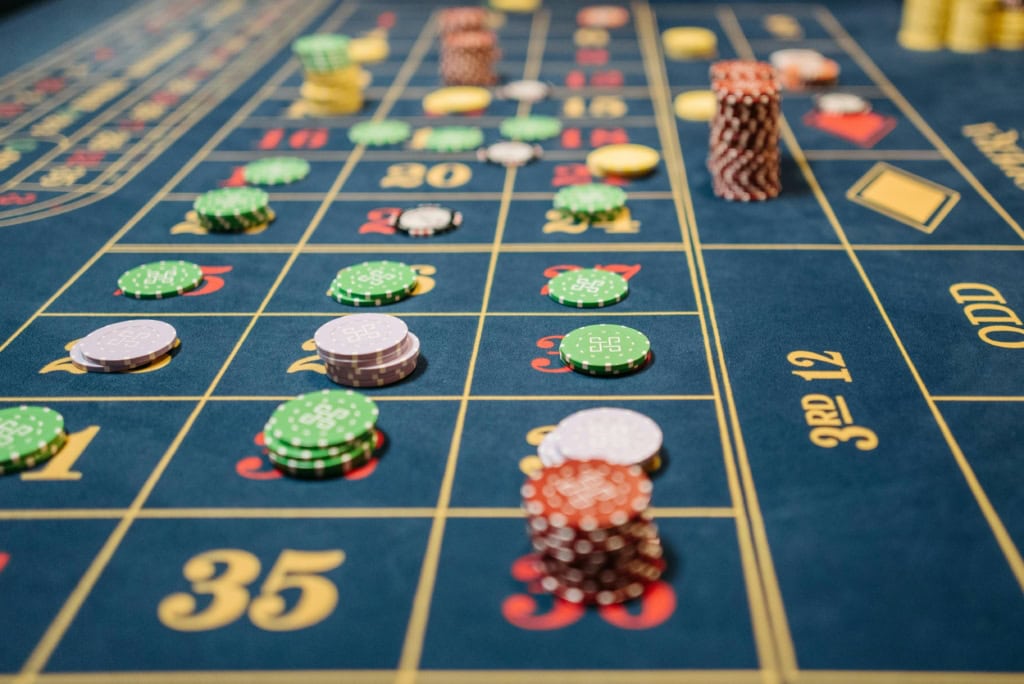
Every financial choice you make, whether it’s buying a straightforward index fund or diving into a risky stock trade, is a lot like what happens on a casino floor. This article breaks down how the rules of craps can actually help you invest better for the long haul. It reveals how simple, smart strategies can win against flashy, high-risk bets.
A craps table might look crazy at first. Dice are flying everywhere, and fortunes can change with just one roll. But if you look closer, there’s actually a simple system with clear odds at play. The smart players get this; they skip the high-risk bets that pay out big but hardly ever hit, and they stick to a few that actually give them a decent shot at winning over time. It’s a pretty disciplined way to play, and you can see a similar mindset in the finance world. The best investors know that mixing emotions with speculation is a recipe for disaster.
The Low-Edge “Pass/Don’t Pass” and the S&P 500
In craps, every bet has a mathematical “house edge.” The table can be reduced to a few bets with the lowest edges: Pass Line and Don’t Pass Line. The most intelligent players stick to these bets. The Odds Bet is also crucial, with a 0% house edge. This bet pays out at true mathematical odds. The “house” makes money from the initial bets, not the Odds.
This is a direct parallel to the financial world. The S&P 500, with its historically positive returns, is the financial equivalent of the low-edge Pass Line bet. It is not flashy, but it has a high probability of success over a long period. By contrast, a high-cost mutual fund is a bet with a built-in “house edge” against you. The clever investor seeks out the financial equivalent of the Odds Bet: low-cost index funds and ETFs. Here, fees are minimal and the expected return is simply the market’s performance.
The Subtle Illusion of Control
A seasoned craps player may believe they have perfected the art of dice setting. They attempt to throw them to minimize randomness. Statistical analysis has repeatedly shown the outcome is a series of independent, random events. A “hot roll” is an outlier. You can’t truly predict what happens next.
This phenomenon is a perfect reflection of the market timing fallacy. Investors believe they can predict short-term movements. The day-trading craze has intensified this misconception. Just like a craps player chasing a lucky roll, an investor might believe they can keep cashing in on a “hot stock.” In reality, they’re both just chasing random luck, not skill.
Attractiveness of Proposition Bets
Players make high-risk proposition bets. These bets on a specific outcome have high house edges but offer tantalizingly high payouts. They are mathematical sucker bets.
In investing, the “get rich quick” mentality tends to attract speculative assets like penny stocks and volatile cryptocurrencies. Like the gambler looking for the lucky break, these investors hope for a big payoff. They disregard diversification and long-term growth in anticipation of a lottery-sized win – sometimes at the expense of their entire bankroll. Such behaviour is a modern analogy for the human need to court uncertainty.
Complex Strategies and the Pitfall of Over-Diversification
Some craps players get into all sorts of complicated strategies like the Three-Point Molly or the Iron Cross. While these might sound fancy, they usually just end up putting more money at risk without really changing the house edge on each bet.
This mirrors the financial pitfall of over-diversification. An investor who chases every new investment product may believe they are a sophisticated operator. But in reality, they are often exposing themselves to higher fees and more risk, and they are likely to underperform a simple, diversified portfolio. The “Three-Point Molly” of investing can be an expensive lesson.
Managing Wins and Losses
A common strategy in craps is the regression, where a player takes down bets after an initial win to secure their profit. A press is when a player uses their winnings to increase their next bet. Greed pushes players to press, while fear makes them regress too early. The most successful players have a pre-defined system.
This is a direct analog to the twin psychological traps of greed and fear in investing. A greedy investor may “press” their bets by over-leveraging their portfolio, leaving them vulnerable to a sudden correction. Conversely, a fearful investor may “regress” and pull their money out of the market during a downturn, locking in their losses. A disciplined investor has a plan for when to take profits and when to buy on the dip, removing emotion entirely.
The Long Run
The biggest difference between craps and investing is how things play out in the long run. With every bet in craps, you’re likely to end up on the losing side since the game is set up that way. In contrast, the market has a positive expected value over the long term. The economy grows, companies innovate, and assets appreciate. This fundamental difference is the ultimate lesson.
Craps teaches you to manage risk and emotion in a game you are guaranteed to lose. Putting money into investments takes discipline, kind of like a game where you have a good shot at winning. The aim is to show up regularly, make those low-risk bets, and let the good odds work in your favor over time.




Leave a Reply